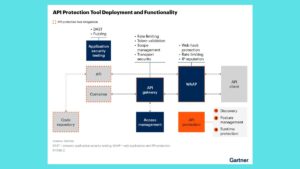Employee Onboarding: 5 Crucial Tips for a Successful Integration

Effective employee onboarding is crucial for integrating new hires and setting them up for success. A well-structured onboarding process not only helps new employees acclimate to their roles and the company culture but also boosts their engagement, productivity, and retention. Here are five crucial tips to ensure a smooth and successful employee onboarding experience.
1. Start Before Day One
Onboarding should begin before the new employee’s first day. Start by sending a welcome email that includes key information about their first day, such as the schedule, dress code, and any documents they need to bring. Providing them with access to an employee handbook or an onboarding portal with essential resources helps them prepare and feel more comfortable before they even step into the office.
Why it matters: Starting early sets a positive tone and helps new hires feel welcomed and valued. It also allows them to get familiar with company policies and procedures ahead of time, reducing first-day anxiety.
2. Create a Comprehensive Onboarding Plan
A structured onboarding plan is essential for guiding new employees through their initial days and weeks. This plan should include an overview of the company’s mission, values, and culture, as well as specific training schedules, introductions to key team members, and detailed job expectations. The plan should outline what the new hire will be doing each day and who they will meet.
Why it matters: A comprehensive plan ensures that new employees have a clear understanding of their role, responsibilities, and how they fit into the larger organization. It also helps them feel organized and confident in their new environment.
3. Assign a Buddy or Mentor
Pairing new hires with a buddy or mentor can significantly enhance their onboarding experience. This person can provide guidance, answer questions, and help the new employee navigate the workplace. The buddy or mentor should be knowledgeable about the company and the role, and who can offer support and encouragement.
Why it matters: Having a designated point of contact helps new employees integrate more smoothly into the company culture and builds a sense of belonging. It also provides them with a go-to person for informal questions and advice, which can be especially valuable during the initial adjustment period.
4. Provide Interactive and Engaging Training
Effective training goes beyond basic orientation. Incorporate interactive elements, such as hands-on exercises, role-playing scenarios, and team-building activities, to engage new hires and reinforce their learning. Use a mix of training methods, including online modules, in-person sessions, and real-world projects, to cater to different learning styles.
Why it matters: Engaging training helps new employees quickly acquire the skills and knowledge they need to be successful in their roles. It also makes the learning process more enjoyable and less overwhelming, which can boost retention and application of the material.
5. Solicit Feedback and Make Continuous Improvements
Regularly solicit feedback from new hires about their onboarding experience. Use surveys or informal check-ins to gather insights on what went well and what could be improved. This feedback is invaluable for refining and enhancing the onboarding process for future employees.
Why it matters: Continuous improvement ensures that the onboarding process remains effective and relevant. By addressing any issues or gaps identified through feedback, you can create a more positive and efficient experience for new hires, leading to better outcomes and higher employee satisfaction.
Conclusion
Successful employee onboarding is crucial for integrating new hires and setting them up for long-term success. By starting the process early, creating a comprehensive plan, assigning a buddy, providing engaging training, and soliciting feedback, you can ensure a smooth and effective onboarding experience. These steps not only help new employees acclimate quickly but also foster a positive work environment and contribute to higher retention rates. Investing in a robust onboarding process is essential for building a strong, engaged, and productive workforce.







